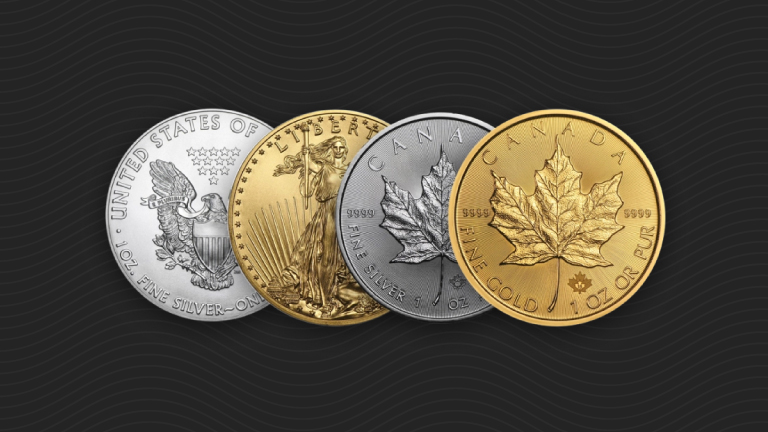Walking Along the Hyperinflationary Cliff
Mark Motive’s Gold Commentary
Would you walk along the edge of a cliff? Sure, you walk around every day (and you’re probably pretty good at it), but knowing that the result of a small misstep would be catastrophic, you’d probably think carefully before walking along a cliff. In fact, you’d probably stay far away from the cliff altogether.
Today, the US economy is walking at the edge of a fiscal cliff. Yes, we’ve managed our way through crises before, but today the risks of even a small policy mistake are greater than ever before. And if we misstep, we’ll fall into the abyss of hyperinflation.
Hyperinflation, defined by economist Phillip Cagan, is a period in which prices rise at 50% or more per month. In some historical cases of hyperinflation, prices rose by a million times over the course of a year! As you can imagine, hyperinflation of this magnitude devastates an economy. However, even a comparatively lower degree of inflation (e.g. 10-20%) can effectively wipe out the purchasing power of savings within a short period of time.
As the talking-heads look at the official Consumer Price Index (CPI) statistics and doubt whether there is currently any inflation, some alternative voices argue that we are already experiencing the early effects of high inflation. After all, anyone who has bought food, driven a car, or paid a medical bill is uncomfortably familiar with the speed at which many prices are rising.
Currently, there are four overarching structural issues driving decisions that can create catastrophic inflation in the US:
Debt growth over economic growth: When a business borrows money, it hopes to make a return that is greater than the cost of the debt itself. The US, however, seems to have forgotten this fundamental business principle decades ago. In fact, many now believe that the US economy requires increasing amounts of debt to maintain the same amount of growth. Consider the data since 2008: the national debt has grown by about 67% but real GDP has been essentially flat. When growth becomes dependent on more-and-more debt, lenders walk away – a process which has already started in the US. Long-time lenders like China have been buying less Treasury debt, and the Federal Reserve has stepped in to make up the difference. This is all due to a preference for debt growth over genuine economic growth.
Deficits and debt monetization: Once government spending reaches a certain level in excess of revenues, the resulting deficits become unfundable by traditional means (i.e. the bond market). Almost always, the central bank steps in to fund the difference by printing currency out of thin air. While austerity is what is truly needed to restructure the unsound economy, the medicine is often too bitter for politicians to swallow; in effect, the economy becomes addicted to deficits. Once a central bank starts monetizing the deficit, that economy is walking along a hyperinflationary cliff.
Diminished capacity to handle crises: Each round of boom-bust that Washington puts us through diminishes our capital stock. In plain English, we’re eating away at the foundation of our economy. In the Great Depression, the US still had tremendous manufacturing and other productive capacities. Now, we specialize in building housing subdivisions and managing retail stores. Our ability to ‘get by’ is diminished, and therefore this crisis is likely to be even deeper and scarier than the ’30s or ’70s.
An insolvent banking system: Despite the economic ‘reforms’ touted by the mainstream media, Western banks remain mired in bad debts. To operate profitably, the banking system needs cheap and easy access to credit. If the Fed were to raise short-term rates, the financial sector would quickly become unprofitable and many major banks would likely collapse. Indeed, the Fed’s highly touted ‘stress tests’ earlier this year inconspicuously did not test higher interest rates – presumably because all the tested banks would flunk. In order to protect the banking system from its past recklessness, central banks are prevented from turning off the printing presses even if the economy has returned to growth.
Today, it might not be clear whether hyperinflation is on the horizon. However, by the time inflation is obvious to the masses, it is too late to do anything about it for two main reasons: 1) The price level is a lagging indicator, because the money printing happens first and leads to higher prices, and 2) By the time everyone notices skyrocketing consumer prices, they have already been priced into the hard assets that could possibly protect investors. Wise investors see the threat of inflation when the money is printed (which has been going on ferociously since 2008) and they move their money into inflation-resistant assets.
Many of your friends and colleagues will be complacent. These are probably the same folks who several years ago missed the warning signs that the housing bubble was about to collapse and that the banking system was about to implode. By the time everyone is talking about inflation, there won’t be much you or the Fed can do except watch our standard of living evaporate.
Despite the nebulous nature of inflation forecasting, the risk of falling off the economic cliff is great enough to warrant action today.

